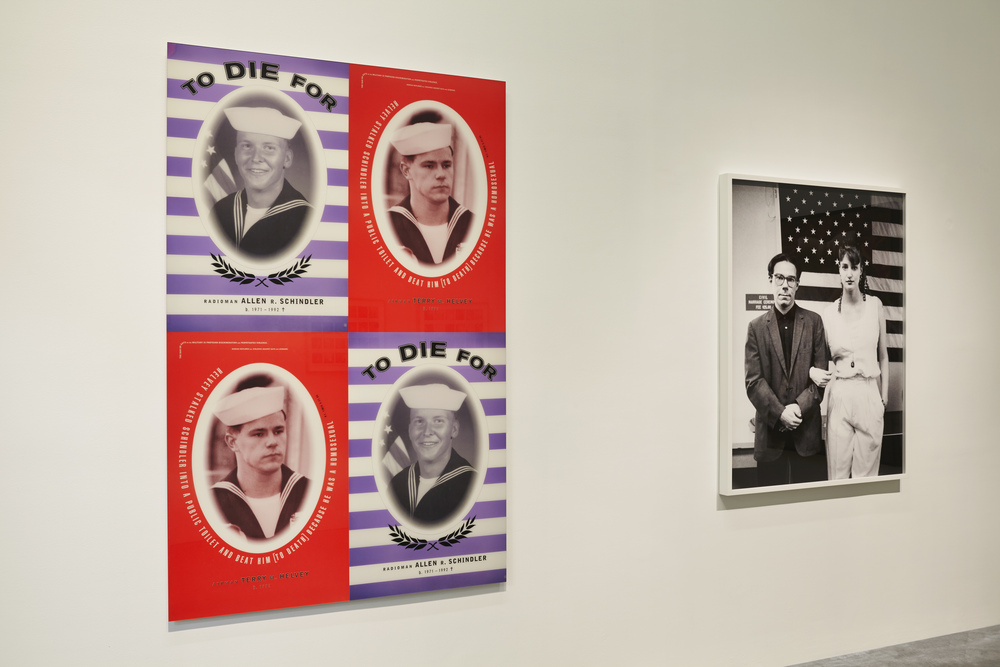
The murderer of US Navy Petty Officer 3rd Class Allen R. Schindler had just pleaded guilty in a military court in Japan when Creative Time wheatpasted In Honor of Allen F. Schindler, Bureau’s poster diptych of the two sailors, all around New York City in the Summer of 1993. [J.N. Herlin has an archived press release.]
I realize though I’d seen the posters, and the basics of the situation, I’d never known the brutal details of Schindler’s killing. Or of the violent harassment Schindler experienced and tried to report, repeatedly, from the moment in late 1991 when he’d transferred to to the USS Belleau Wood until his murder October 27, 1992, days before Bill Clinton defeated George Bush in the US presidential election.
Clinton had campaigned to end the military’s ban on gay soldiers. Bush and his Defense Secretary, the draft dodger and parent of a gay child Dick Cheney, and many other Republican politicians, supported the ban, and fostered the atmosphere of homophobic violence and discrimination under the guise of military unity. Actually, gays were the real threat to this culture, they argued, what with the blackmail, and the AIDS.
I also did not realize the vast extent to which the US Navy abandoned and gaslit Schindler’s mother and family, and to which they covered up the culture of abusive bigotry encouraged by the officers on Schindler’s ship, and to which they obstructed investigations and attempts to seek accountability, much less reform. This all unfolded after the posters had gone up and worn down, after Clinton agreed to a compromise with the powerful and bigoted senator from Georgia, Sam Nunn, the policy known as Don’t Ask, Don’t Tell.

Bureau was the design studio of artists Marlene McCarty and Donald Moffett, a continuation of sorts of Moffett’s involvement with the activist collective Gran Fury. At some point, or eventually, it all just became too much, too intense, too traumatic, and Moffett sought refuge in the studio, and in art, making abstract paintings. He seemed to address it in his 2019 Brooklyn Rail conversation with Dan Cameron, but rereading it now, it’s actually Cameron who does the talking, both questions and answers.
The way I’d remembered the posters installed was the way I’d remembered all Bureau’s posters, in an alternating grid, which was also how they were shown in 2013 at the New Museum’s NYC 1993 time capsule survey. I mention them now because a pair of posters just turned up in LA Modern’s post-Pride queer swag auction. But also because we live with one of Moffett’s earliest abstract paintings at the center of our home; we pass it hundreds of times each day. And its beauty now reminds me of the psychic cost Moffett paid to get to the place where he made it. Also, we’re entering an era where government-led bigotry and violence against its own people are expanding, and we need to remember how it went down before, and how to counter it.
